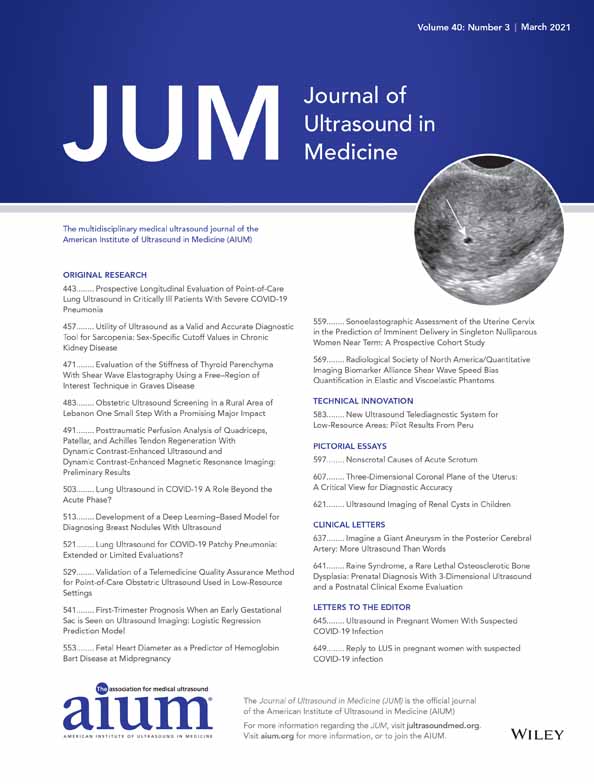Obstetric Ultrasound Screening in a Rural Area of Lebanon One Small Step With a Promising Major Impact
All of the authors of this article have reported no disclosures.
Abstract
Objectives
Our aim was to evaluate the conditions and to weigh the potential impact of an obstetrical ultrasound screening intervention on pregnant patients in an underserved area of Lebanon with the presence of refugees.
Methods
We performed a cross-sectional study in a rural region in North Lebanon. Monthly second-trimester obstetrical ultrasound scans were offered to patients. A thorough analysis of the population's characteristics was done, the anomalies discovered were documented and follow up recommendations were offered.
Results
268 screening ultrasounds were performed over a one-year period. The patients' mean age was 27.5 ± 8.5 years with a 35% consanguinity rate. A positive personal history of abnormalities was recognized in 34% of cases, and a positive family history in 21% of them. The average gestational age was of 23.3 ± 1.4 weeks of gestation. We found a rate of 8.6% inaccurate dating, 20% growth abnormalities, and 12% morphological abnormalities requiring follow-up. These latter included defects affecting multiple organ systems among which renal, neurological, and cardiac structures were the most frequently affected (2.5%, 2%, and 1.6% respectively). Overall, 35.8% of the screened cases required a follow-up for 1 or more abnormal findings.
Conclusions
The findings confirmed the necessity to introduce a prenatal ultrasound screening program in rural areas of Lebanon where refugees are settled. The lack of adequate ultrasound screening in these regions presents major threats that can hinder any pregnancy. Our simple intervention tackles the burden of diagnosis of these risks in up to 35.8% of pregnancies and thus can help improve outcomes.




